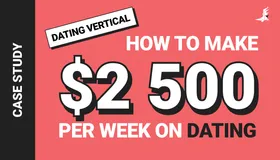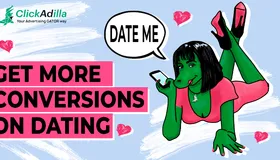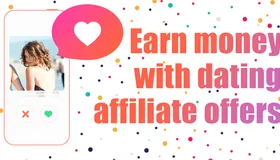
Traffic is pricier, users are pickier, and the competition is tougher. This article breaks down the biggest mistakes in dating campaigns — and how to avoid them. From mismatched creatives to weak targeting, learn how Clickadilla helps you launch campaigns that actually convert.
Imagine this: you launch a campaign, spend your entire budget within a few hours — and get zero conversions. This scenario is all too familiar for those who’ve entered the dating niche unprepared. Especially in 2025, when traffic is more expensive, users are more selective, and the competition is stronger than ever.
In this article, we’ll go straight to the point: why dating ad budgets get wasted — and what you can do to avoid it. No long theory, just practical advice and clear steps to help you protect your spend and get the results you’re aiming for.
1. A mismatch between the creative and the offer
Let’s say your ad promises light and fun dating — but the landing page focuses on long-term relationships. Or the opposite: the user expects something calm and serious, but sees a bright, provocative design instead.
They click — and leave right away. Because what they expected and what they got were two completely different things.
Why this matters in dating:
Dating is all about expectations. If the message doesn’t match what’s actually offered, users feel misled and leave. No conversions, no signups, no revenue.
How to avoid wasting your budget:
- Create your ad based on the offer, not just to grab attention.
- The visuals, tone, and message should all align with what’s on the landing page.
- If the offer is about building connections, don’t use creatives that suggest something entirely different.
Something else to keep in mind:
Landing pages that rush the user straight into a registration form — with no context or explanation — often don’t convert. People are less likely to give away personal information if they don’t understand what’s next or why it matters.
What helps:
- Add a soft entry point. Even a simple question like “Are you looking for men or women?” creates engagement and sets expectations.
- Use quizzes, short intros, or interactive steps — they lower the entry barrier and build trust.
A consistent flow from ad to landing page to offer is already half the work done. And it makes every click count.
2. Targeting is too broad
Launching a campaign for "everyone, everywhere, on every device" may sound efficient — but in reality, it often means spreading your budget too thin and getting weak results.
What to do:
- Start with a focused audience. Look at your offer and define limits: geo, device, OS, language.
- Think through the user journey: where are your potential users, and how do they browse?
Pro tip:
Begin with Tier-2 or Tier-3 geos like Brazil, the Philippines, or India — lower bids, less competition, and a good way to gather initial data without overspending.
3. One creative for the whole campaign
Running just one creative — one banner, one image, one headline — leaves no room for testing or comparison. If it doesn’t perform, the whole budget goes down the drain.
What to do:
- Prepare at least 3–5 creatives for your initial launch.
- Test variations not only in visuals but also in messaging, tone, and call to action.
- In dating, different angles work for different users: emotional, humorous, curious, or subtle.
Helpful feature:
Clickadilla supports creative auto-rotation, so you can see which ones perform best — and let the system prioritize them automatically.
4. High bids with no testing
It’s tempting to start big and push your ad to the top. But setting a high bid right away, without testing or optimization, often leads to fast and unproductive spend.
What to do:
- Start with the platform’s recommended or average bid.
- Set clear limits: daily budget caps, impression limits, click caps.
- Monitor your results and adjust as you go — don’t “set and forget”.
Good to know:
Use frequency capping to avoid showing your ad to the same user repeatedly. This helps preserve your reach and protects your budget from unnecessary waste.
5. No tracking or optimization
Running a campaign without tracking is like driving with your eyes closed. You won’t know where the traffic is coming from, which placements convert, or where you’re losing money.
What to do:
- Set up a tracker like Keitaro, Binom, or RedTrack — or at the very least, monitor your in-dashboard stats.
- Regularly review performance by placement and source.
- Remove placements that don’t convert, and whitelist those that do.
Note:
The sooner you start collecting and analyzing your data, the faster you can scale with confidence.
6. The format doesn’t match the offer
Even the strongest offer can fail if the ad format doesn’t fit the funnel. In the dating niche, format choice is critical — it influences both how your message is delivered and how users engage with it. Some offers are also limited by traffic source policies.
How to avoid this mistake:
- Always double-check which formats are allowed for your offer — some partner programs don’t accept certain sources.
- Match the format to the message and the user’s intent. In dating, here’s what works well:
Push notifications
Great for emotional, personal messaging. They go straight to the user’s browser and feel like a private interaction.
In-Page Push
Similar to classic push, but shown directly on websites without requiring a subscription. Excellent for reaching iOS users and for broader visibility.
Popunder
Affordable, large-scale format that’s ideal for fast testing. The key is having a strong, attention-grabbing landing page.
Native ads
Blended into the site’s content. They feel more organic and generate quality engagement — but need extra care in wording and design.
We’ve covered each format in a dedicated article about formats in the dating niche.
7. Ignoring current trends
The dating audience has evolved — and so should your campaigns. Users expect more context, more relevance, and more interaction than ever before.
What’s trending in 2025:
- AI-based dating apps
Virtual companions powered by AI are gaining popularity, especially among younger users. Messaging and creatives for these apps should reflect their unique tone. - Interactive experiences
Simple landings with a signup form don’t work as well anymore. Quizzes, mini-games, and animations are more engaging and help filter out users who aren’t really interested.
- No more “one-size-fits-all”
Don’t run the same creative across all geos and devices. Localizing visuals, language, and even offers improves performance and reduces wasted spend.
Ready to launch?
Dating offers can still perform extremely well in 2025 — but only if campaigns are planned with care. That means clear targeting, consistent messaging, multiple creatives, proper tracking, and continuous optimization.
Clickadilla gives you all the tools to do just that. From flexible targeting and format selection to source analytics and fraud prevention — everything is built to help advertisers launch confidently and scale without waste.
Ready to run a dating campaign that works?





